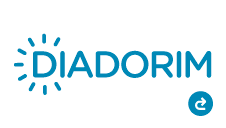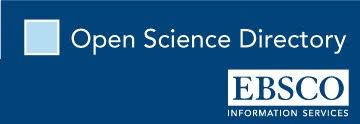Tradução centrada no usuário e formação em tradução audiovisual acessível: um estudo de caso
Mots-clés :
Acessibilidade Midiática. Tradução Audiovisual Acessível. Formação de Tradutores. Tradução Centrada no Usuário. Audiodescrição.Résumé
Ao longo dos anos, o estudo da recepção vem ganhando cada vez mais destaque no campo da Tradução Audiovisual (TAV), especialmente no que tange às modalidades mais diretamente associadas à acessibilidade midiática. Contudo, essa preocupação com a audiência nem sempre tem sido contemplada pelos modelos adotados para a formação dos futuros tradutores. Neste texto, apresentamos a Tradução Centrada no Usuário (TCU), desenhada por Tytti Suojanen, Kaisa Koskinen e Tiina Tuominen, como uma proposta para a solução desse problema. Para tanto, explicamos o modelo proposto por suas autoras e, em seguida, ilustramos sua aplicação através da análise e discussão de uma experiência formativa realizada com alunas de graduação do Instituto de Letras da Universidade Federal da Bahia. Ao final da experiência, as alunas relataram ganhos envolvendo tanto a roteirização, quanto a revisão e a edição, além de destacarem o trabalho com habilidades de relacionamento interpessoal e o contato com representantes do público-alvo. Esses resultados nos levam a acreditar que a TCU permite uma prática crítica, reflexiva e colaborativa, que garante maiores chances de sucesso no atendimento das necessidades e preferências dos usuários finais. Desse modo, esperamos contribuir para a popularização da TCU e para a conscientização da importância da adoção de práticas centradas no usuário na formação de tradutores, instigando o debate acerca de novos modelos de formação em Tradução Audiovisual Acessível (TAVA).
Références
Baños, R., & Díaz-Cintas, J. (2018). Language and translation in film: Dubbing and subtitling. In K. Malmkjaer (Ed.), The Routledge handbook of translation studies and linguistics (pp. 313-326). Routledge.
Di Giovanni, E., & Gambier, Y. (Eds.). (2018). Reception studies and audiovisual translation. John Benjamins Publishing Company.
Esqueda, M. D., Ferreira, G. A., & Morais, C. F. (2023). “Preparando o terreno”: Palavras introdutórias dos tradutores à tradução do texto de Don Kiraly (2012), Cultivando uma pedagogia da tradução baseada em projetos: uma perspectiva fractal. Revista Belas Infiéis, 12(1), 01-23. https://doi.org/10.26512/belasinfieis.v12.n1.2023.46755
Greco, G. M. (2018). The nature of accessibility studies. Journal of Audiovisual Translation, 1(1), 205–232.https://www.jatjournal.org/index.php/jat/article/view/51/10
Greco, G. M., & Jankowska, A. (2020). Media accessibility within and beyond audiovisual translation. In L. Bogucki, & M. Deckert (Eds..), The Palgrave handbook of audiovisual translation and media accessibility (pp. 57-81). Palgrave Macmillan.
Kiraly, D. (2000). A Social Constructivist Approach to Translator Education. St. Jerome.
Nord, C. (2012). Quo vadis, functional translatology?. Target, 24(1), 26–42. https://benjamins.com/catalog/target.24.1.03nor
Perego, E., & Pacinotti, R. (2020). Audiovisual translation through the ages. In L. Bogucki, & M. Deckert (Eds.), The Palgrave handbook of audiovisual translation and media accessibility (pp. 33-56). Palgrave Macmillan.
Reiss, K., & Vermeer, H. J. (1996). Fundamentos para una teoría funcional de la traducción (Reina, S., & De Leon, C., Trad. para espanhol). Akal.
Silva, M. C. C. C. da (2019). Para além do visível: Princípios para uma audiodescrição menos visocêntrica [Tese de doutorado, Universidade Federal da Bahia]. Repositório Institucional da UFBA. https://repositorio.ufba.br/handle/ri/29344
Silva, M. C. C. C. da, Jesus, M. N. de, Soares, E. A., & Queiroz, A. da S. (2022). Caminhos para a acessibilidade educacional: audiodescrição das imagens do aplicativo Iara. GEMInIS, 12(3), 100-123. https://doi.org/10.53450/2179-1465.RG.2021v12i3p100-123
Soares, E., & Silva, M. C. C. C. da. (2023). Novos horizontes em tradução audiovisual: Audiodescrição de imagens estáticas no aplicativo IaraApp. In L. M. T. R. Baptista, C. D.P. de Souza, A. B. H. de Góes, & I. S. Costa (Orgs.), Linguagem e interação em foco: Desafios e possibilidades no cenário contemporâneo (Vol. 2, pp. 25-39). EDUFBA.
Stake, R. E. (1999). Investigación con estudio de casos. Morata.
Suojanen, T., Koskinen, K., & Tuominen, T. (2015). User-Centered translation. Routledge.
Vercauteren, G. (2014). A translational and narratological approach to audio describing narrative characters. TTR: traduction, terminologie, rédaction, 27(2), 71-90. https://www.erudit.org/en/journals/ttr/2014-v27-n2-ttr02697/1037746ar.pdf
Yin, R. K. (1993) Applications of case study research. Sage Publishing.
Téléchargements
Publié
Numéro
Rubrique
Licence
© CC BY 2024

Cette œuvre est sous licence Creative Commons Attribution 4.0 International.
Copyright Statement
Given the public access to this journal, the texts are free to use but requires the recognition of the original authorship and initial publication in this journal to be properly stated.
The journal allows the use of works published for non-commercial purposes, including the right to submit the work to publicly accessible databases. Published contributions are the sole and exclusive responsibility of the author(s).
- When submitting papers to be evaluated by the Belas Infiéis journal, the author(s):
- Declare that the contents of the contributions are original and of their original creation, being entirely responsible for their content if there is an objection by third parties.
- Claim to be aware that they should not commit academic plagiarism.
- Declare that the manuscript has not been published, completely or partially, in Portuguese or another language. If it is a translation it should be submitted to the Translated Articles section.
- Declare that the manuscript is not being evaluated by other journals.
- Declare that the manuscript was not submitted to another journal simultaneously.
- Commit(s) to inform the journal of any kind of error or inaccuracy in their contribution (published, in evaluation or in editing) and to collaborate with the editors to make due corrections of the article (when in evaluation or editing) or erratum/retraction (after publication).
- Declare that there is no conflict of interest regarding the published work.
- Authorize its release if it is accepted for publication without any kind of monetary compensation.
- Agree to assign non-exclusive rights to publication to the magazine, remaining free to make their contribution available in other media as long as the publication of the first version in Belas Infiéis magazine is mentioned. They also authorize Belas Infiéis to assign their texts for reproduction in content indexers, virtual libraries and similar platforms.
- Maintain copyright and grant the journal the right of first publication, the work being licensed under theCreative Commons Attribution License.
- Is/Are allowed and encouraged to publish and distribute their work online after the editorial process, which may increase the impact and citation of the published work.
- Authorize the editorial team to make textual adjustments and to adapt the article to the publication rules, when necessary.



















